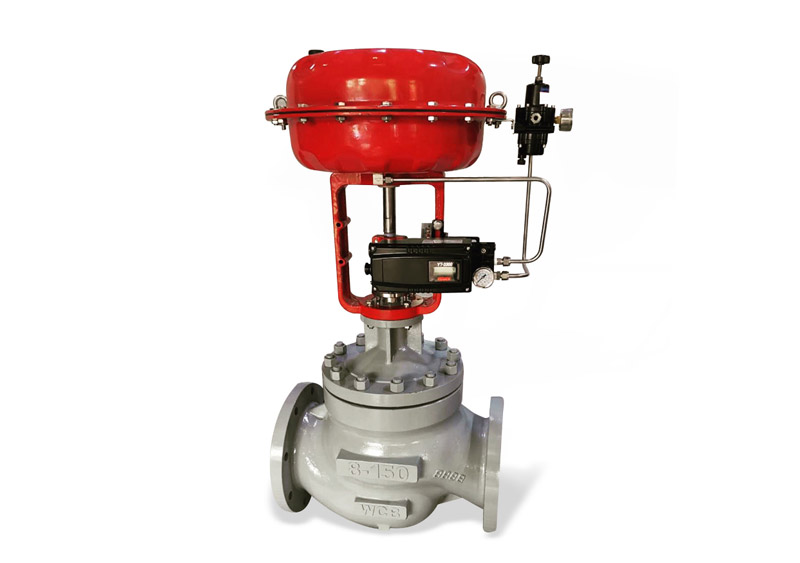Important Aspects to Take Into Consideration When Picking Control Valves
Important Aspects to Take Into Consideration When Picking Control Valves
Blog Article
Achieve Seamless Integration and Control With Quality Structure Automation Controls
In the world of contemporary structure administration, the relevance of top quality building automation controls can not be overemphasized. As innovation remains to breakthrough, the combination and control of different systems within a building have evolved to be a lot more efficient and advanced. The smooth operation and tracking of lighting, A/C, protection, and other structure functions have come to be critical for boosting occupant comfort, power performance, and overall functional performance. The trip towards accomplishing real assimilation and control is a diverse one, with factors to consider varying from system compatibility to cybersecurity. Embracing high quality structure automation controls is not just an issue of convenience but a calculated vital for companies aiming to enhance their facilities' efficiency and sustainability.

Evolution of Building Automation Controls
Throughout the previous few decades, the advancement of building automation controls has significantly changed the way buildings are taken care of and operated. Constructing automation systems primarily focused on standard features such as managing air flow, home heating, and air conditioning (HEATING AND COOLING) systems. As innovation progressed, these controls have actually become extra innovative, allowing for a wider range of building systems to be integrated and handled centrally.
The advancement of constructing automation controls has seen a change in the direction of even more smart systems that can adjust to altering problems in real-time. This versatility is crucial for optimizing energy performance and ensuring occupant comfort. Additionally, modern building automation controls currently supply attributes such as anticipating maintenance, remote tracking, and information analytics, making it possible for center managers to make data-driven decisions to boost building efficiency.

Advantages of Top Quality Combination
The development in building automation manages in the direction of even more smart systems has actually highlighted the considerable advantages of top quality assimilation in optimizing structure procedures and boosting overall efficiency. This centralized control also offers better visibility and insights right into structure efficiency, making it possible for positive upkeep and optimization approaches. On the whole, the benefits of quality integration in building automation controls are indisputable, providing boosted performance, convenience, and functional efficiency.
Improved Individual Experience and Availability
Enhancing individual interaction with building automation controls via instinctive layout and improved availability raises the overall experience for occupants and facility supervisors alike. By concentrating on individual experience, developing automation systems can end up being much more efficient and straightforward. Intuitive user interfaces, clear navigating, and adjustable settings empower customers to engage with the controls easily and efficiently.
Accessibility attributes play an essential role in making sure that all individuals, consisting of those with specials needs, can use the building automation regulates easily. Incorporating attributes such as voice commands, tactile switches, and color-contrasted screens can enhance access and make the controls a lot more inclusive.
In addition, enhanced customer experience results in greater individual contentment, boosted productivity, and much better decision-making. Residents can readjust environmental setups according to their preferences, while center managers can successfully handle and check building systems - control valves. On the whole, prioritizing individual experience and accessibility in building automation regulates adds to a much more smooth and productive structure environment for all stakeholders entailed
Sustainable Practices With Automation

Moreover, automation can help with the integration of renewable power sources such as solar panels or wind generators right into structure operations. Via automation, structures can straighten with contemporary sustainability objectives and contribute to a greener future.
Future Trends in Structure Control Solution
In expectancy of advancing and advancing innovations sustainability methods, the trajectory of building control systems is poised to welcome ingenious solutions and transformative techniques. One famous pattern forming the future of structure control systems is the increased combination of Artificial Intelligence (AI) and artificial intelligence. These innovations enable structures to adapt in real-time to changing conditions, optimizing power usage and boosting convenience for occupants. In addition, the Web of Things (IoT) is revolutionizing building control systems by linking tools and sensors to enhance procedures and improve performance.
An additional key trend is the focus on cybersecurity procedures to safeguard against prospective dangers to building automation systems. As structures become more interconnected, guaranteeing robust cybersecurity methods will be important to safeguard sensitive data and avoid unapproved access.
Furthermore, the change in the direction of cloud-based systems is acquiring energy, enabling systematized control and remote accessibility to building systems. This promotes much easier monitoring, upkeep, and updates, boosting the general efficiency Our site and flexibility of building control systems. As innovation remains to development, these fads are anticipated to form the future landscape of structure automation controls, driving technology and sustainability in the constructed setting.
Verdict
Future patterns in building control systems are most likely to focus on further enhancing automation capacities for enhanced power effectiveness and overall efficiency. It is important for structure proprietors and operators to focus on the adoption of top quality building automation controls to enhance structure procedures and achieve long-lasting sustainability goals.
In the world of contemporary structure monitoring, the importance of quality structure automation controls can not be overemphasized. Generally, the evolution of structure automation controls proceeds to drive development in the structure management sector, offering brand-new possibilities for developing smarter and more lasting structures.
The improvement in building automation manages in the direction of more useful site intelligent systems has actually underscored the substantial advantages of high quality assimilation in enhancing structure operations and improving total efficiency. Generally, focusing on customer experience and ease of access in structure automation regulates contributes to a more productive and seamless structure environment for all stakeholders involved.
It is crucial for building owners and drivers to focus on the fostering of quality building automation manages to optimize structure operations and attain long-term sustainability goals. - control valves
Report this page